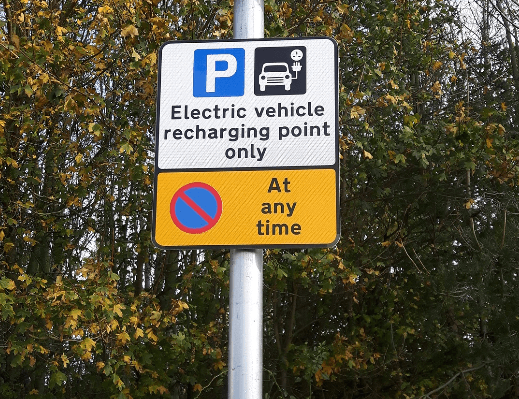
news: Implementation pathways to accelerate EV adoption
Wednesday 1st November 2023
Since the Paris Agreement to tackle the impact of climate change, we have seen an increase in electric vehicle adoption across the globe. Whilst EVs are certainly not a silver bullet to tackle our climate change issues, they are recognised as an important piece of the puzzle to achieve our net-zero target. We are largely past debating the credibility of electric vehicles and ready to turn our focus to the next burning question: How can we accelerate EV adoption?. In a world where different countries are at different stages of adoption, learning from each other to identify and overcome challenges equitably is key to unlocking and accelerating EVs.
ITP organised a round-table webinar on 19th September 2023, to discuss various policy and planning components of EV acceleration. ITP was delighted to welcome to the session industry expert speakers working at the heart of EV rollout in emerging economies as well as more advanced adopters. The ITP expert team was joined by Tali Trigg, a principal at the European Bank for Reconstruction and Development (EBRD), James Leather, The chief of the Transport Sector group at the Asian Development Bank (ADB), and Richard de Kam, a Technical Director at the Province of Gelderland, Netherlands. Tom Fleming, an Associate at ITP, presented the EV public charging planning tool VOLT and how it can help develop an area-wide charging infrastructure plan. The session was moderated by Moshiuzzaman Mahmud, a Technical Director at ITP, and Georgia Taylor, a Principal Consultant at ITP.
The webinar discussed several key topics across the EV value chain, including:
- Overcoming infrastructure challenges through public and private sector initiatives
- Innovative ways of planning public EV charging facilities
- Maximising value for money of the investment in EV charging infrastructure

Public-private sector collaboration
Some of the greatest challenges faced by EVs are that: The total cost of Ownership (TCO) of some EVs is not yet at par with their Internal Combustion Engine (ICE) counterparts in most countries. There are also investment gaps to reduce the cost differentials and implement the supporting infrastructure. Both public sector agencies and the private sectors have significant roles to play in bridging that gap. Therefore, the key questions to answer are: what excites the private sector? and what environment does the public sectors need to create to attract the private sectors?.
According to Tali Trigg, we "are starting to move from choosing electric to using electric vehicles. As a result, there is a lot of scope for growth in private sector markets, ranging from digitalisation, charging as a service, electric maritime, retrofitting and fleet. Governments have a major role to play at the beginning to pave the way".
The public sector agencies are rightly responsible for creating an enabling environment by implementing the right policy and regulatory framework. An ambitious yet practical approach is needed to meet our net-zero target. According to James Leather, "The policies are to a large extent in their infancy with regards to e-vehicles, and the vast majority of the countries will need support to develop the climate change components in transport policies and vice versa putting transport into the climate documents".
Be it the public sector initiatives or private sector investment, the readiness of a country and potential entry-points are key factors that influence the EV rollout. Through technological innovation, public sector subsidies and private sector investments, the current gap in Total Cost of Ownership (TCO) between the EVs and their ICE counterparts is gradually converging. In some countries, especially for light vehicle categories, TCO is already at parity with ICEs.
Innovative ways of planning EV charging infrastructure
An adequate supply of charging infrastructure is critical to accelerate EVs. Albeit there is a common misconception that the public sector alone have the responsibility to roll out the public chargers across the network. Both public and private sectors have a major role to play in this space. Informed decisions are needed to roll out a city's charging infrastructure effectively. Royal HaskoningDHV has developed a spatial planning tool called VOLT for EV public charging infrastructure, which is being used by several local and provincial authorities in the Netherlands. This spatial planning tool helps the authorities move from a more reactive implementation of EV chargers to a more proactive approach.
A spatial planning tool helps identify key site constraints and other influencing factors, such as grid constraints, before allocating a location. Increasing electricity grid capacity is a cost-intensive component of charger installation; therefore, an early indication of viability is essential.
Maximising the value for money of the investment
Does implementation of public chargers through reactive responses to requests give the best value for money for investment? Area-wide planning and allocation of charging locations can help to minimise any site-specific issues and enable a coherent deployment of chargers. According to Richard de Kam, the Province of Gelderland, “The importance of planning infrastructure is that we want to make sure that as soon as we start realising the charging locations, we don’t want to run into issues that we could have foreseen. We, on one side, forecast the EV demand and EV chargers and align that with the technical restrictions of the municipality”.
Technological advancements in vehicle and battery manufacturing have helped markets to design-out most of the ‘range anxiety’ experienced by early adopters. The issue that we face today is charge time anxiety as our EVs take longer to charge compared to refuelling an ICE and fast chargers are limited. The considerations for destination chargers and pre-booking apps, along with location information, can help us to ease that anxiety. The proposition has investment potential as well as economic value.
ITP would like to thank all the guest speakers for their extremely valuable insights into the topic and for being part of our journey to improve the way the world moves. Further information about work in the e-mobility sector can be found here.
If you would like to know more about how ITP can help support your vision for e-mobility development and wider sustainable urban mobility, then please get in touch.
